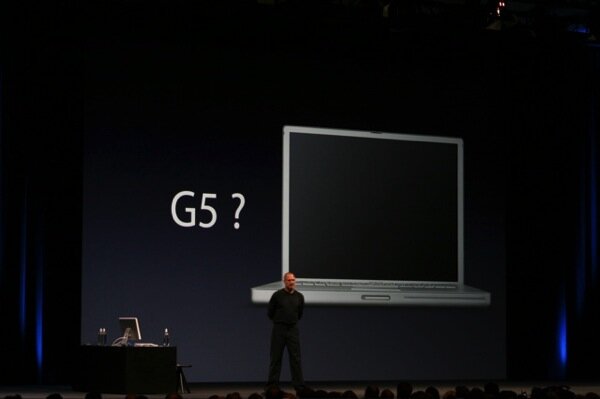
The PowerBook G5 was a mythological Mac that we never saw. It was even derided by Steve Jobs himself (image courtesy of ascii.jp) during the WWDC 2005 keynote when the late CEO of Apple announced that Macs would abandon PowerPC microprocessors in favour of Intel.
Apple actually sold desktop Macs with a G5 processors, but never managed to release any laptop with it. The reason was the lack of a mobile low-power version of it.
I thought of the PowerBook G5 just tonight after dinner while reading this excellent post by Jean-Louis Gassée. The argument he explores in the article is the possibility that one day Apple might start using ARM processors in the Mac.
As you well know ARM processors are already used in the iPhone and iPad. The ARM advantage for Apple is:
- Lower price than Intel
- Owning the roadmap
- Owning the design
The last two points is a corollary to:
Apple’s drive to own “all layers of the stack” continues unabated years after Steve’s passing. As a recent example, Apple created its own Swift programming language that complements its Xcode IDE and Clang/LLVM compiler infrastructure.
Owning all layers of the stack must be at the top of many Apple’s executives. It would make sense for Apple to extend the control they have over hardware, software, services and media to the microprocessor as well. This is not only for the sake of sheer control obviously. It is having real consequences on Apple’s ability to sell newer, faster Macs.
In fact, right now Apple cannot release updated Mac models because Intel is unable to produce Broadwell x86 processors. Last week Retina MacBook Pro’s updates were just a sign of it. The new models just sported minor spec bumps to entice users before the release of the next generation of x86 processors.
It’s legitimate to believe that with its cash reserves and its even bigger ambitions, Apple has all the interest and power to go down this road.